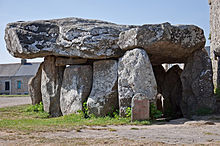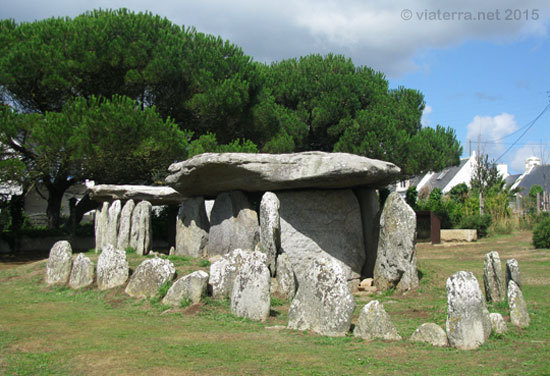Take That Stonehenge!
You have heard - you must have heard - about the prehistoric Stonehenge alignment in England, a mysterious solar clock is it? Or maybe a lunar calendar, or simply a burial ground, we don't know for sure to this day.
Let me tell you about the menhirs and dolmens of good old Brittany, in France. The erected granite stones found in several places in the salted land, with the most prominent ones seen in Carnac, are older than Stonehenge, 4500 BC versus 3000 BC.
The legend wants the giant Carnac stones to be the stuff of enchantment and superstitions. The dense collection of megalithic rocks includes dolmens, menhirs, tumuli, and other alignments. Menhir is a word in Breton language that means long stone ( maen, "stone" and hir, "long.")
Some 3,000 tall stones were erected 7,000 years ago at Carnac by the pre-Celtic people of Brittany. It is unclear why the story of Saint Cornelius turning pagan soldiers of Rome into stones, or why the wizard Merlin was also possibly responsible for entire Roman legions to be turned to stone, as both of these happenstances would have been no older than the first century.
Merlin, the Beloved Wizard.
For those unfamiliar with Merlin, he was a good wizard in the Arthurian (from King Arthur) legend, and even though he was allegedly born in Britain (UK), he died and was buried in Brittany. Was Merlin a real person? The fog over Brittany will never reveal such a secret, but in the history of that part of France, Merlin was sometimes a holly tree, sometimes a wise man.
The forest of Brocéliande in Brittany was often used as the site of magical happenings involving several legendary wizards and fairies, as well as some of King Arthur's Knights of the Round Table working undercover to assure the pursuit of the Holy Grail and the preservation of the peace.
In Arthurian times, Brittany was not yet part of France but was its own kingdom, sometimes even considered a colony of Britain, as many Britons (from England) came to settle there. In French England is also called Grande-Bretagne, which means Great Brittany.
Druids in Brittany were real and were the medicine men of their time - they roamed the land of pines, roses, and wild lavender, scavenging roots and flowers to make special potions and ointments from the products of the earth.
With the power to heal and to treat, the mystical side is easy to imagine surrounding such creatures. Brittany is very much filled with myths and fairy tales, with a sentiment of knowing that none of it can be the truth, the oral traditions are stronger in Brittany than history books, and the deep forest of the land are very good at hiding facts.
Are They Sacred Stones?
Some of the rock formations clearly look like massive tables, or perhaps just shelters. Were they used for sacrifices? Maybe a goat or two saw their final moment flash in front of their eyes while lying on the cold stone in the darkness of a tragic moonless night.
My grandparents had a small dolmen in their backyard, and they used to tell us, kids, that it was a sacred stone where you could lay one hand and solemnly make a wish of your desire. I have many unfulfilled wishes waiting for that particular stone to make them happen.
If those dolmens were tombs, the acidic soil of Brittany has long eaten away the human bones. The dolmens are usually made of several standing stones, capped by a flat top lying on the "legs". Some were gigantic monuments, such as the Crucuno dolmen, a 40-ton semi-flat table stone of about 25 feet, supported by 5 ft 11 in high pillars.
Smaller stones in perfect alignment remind the eye of a modern cemetery, but the fact that no bones are left makes it impossible to confirm the true meaning of the strange stones. And if they were indeed graves, why only at a few special spots in the province of Brittany, and not all over the country?
Ireland, England, France, and India all have well-documented such stones, most probably all tombstones. Was it a way to preserve bodies from the harsh elements to have them buried under such heavy stones? But the mystery of how such heavy pieces were moved around and aligned in sometimes perfect symmetry remains an unexplained phenomenon.
The remarkable alignment of Carnac is unique in the World, and even though it might not be as famous as Stonehenge, it remains an eerie beautiful mark of our ancestors' prints on this earth.
Questions / Comments = sidoniesawyer@gmail.com.
Visit my website for more stories.



